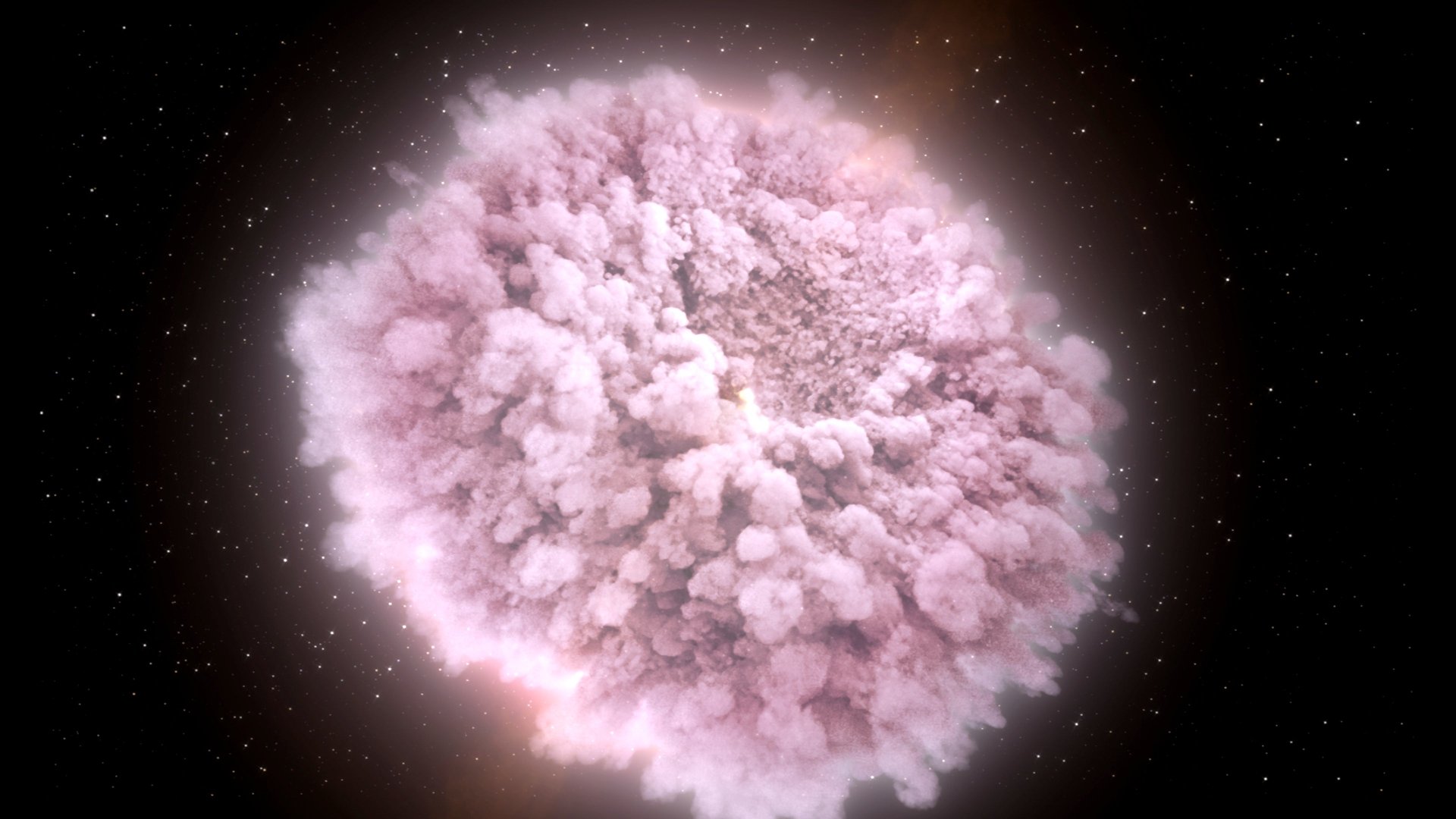The most underrated scientific breakthroughs of 2017
One of the most frustrating things about science is that it’s an incremental process. This, however, is a feature, and not a bug; in order to advance our understanding of ourselves and the world around us, we need to test and retest—and retest and retest—everything new thing we think we’ve discovered. That means it’s easy to miss scientific breakthroughs amid the churn of the daily news cycle, especially in the current political climate. So we’ve decided to look back at 2017, and highlight some of the advances made in various scientific fields that we feel were both underrated and are likely to have a major impact in 2018 and beyond. In no specific order:


One of the most frustrating things about science is that it’s an incremental process. This, however, is a feature, and not a bug; in order to advance our understanding of ourselves and the world around us, we need to test and retest—and retest and retest—everything new thing we think we’ve discovered. That means it’s easy to miss scientific breakthroughs amid the churn of the daily news cycle, especially in the current political climate. So we’ve decided to look back at 2017, and highlight some of the advances made in various scientific fields that we feel were both underrated and are likely to have a major impact in 2018 and beyond. In no specific order:
A pill to treat mental illness with built-in data tracking technology
The world’s first digital drug could revolutionize how doctors and patients interact. Once ingested, the pill (which contains tiny chips made of magnesium, silicon, and copper) can send information from inside the body to an adhesive patch placed on a patient’s torso. The patch then relays those data to a doctor’s office, and, for those who wish to monitor themselves as well, to a smartphone app. So far, the US Food and Drug Administration has only approved the technology for use in medications used to treat schizophrenia and bipolar disorder. However the approval will inaugurate a new mode of health care where physicians will have more direct access to patient data of an entirely differently quality than the self-reported stuff they have to make do with today. This new paradigm, of course, also raises questions about privacy, bioethics, and the use of big data gathered from inside your body. — Chase Purdy
SpaceX’s reusable Falcon 9 rocket
Elon Musk’s heartbreak and obsessions with tunnels got more press, but his company SpaceX’s successful launch of three previously-flown rocket boosters was a major step forward in space travel. Futuristic space businesses depend on ever-cheaper trips to orbit, and Musk—along with burgeoning competitor Jeff Bezos’ Blue Origin—is poised to deliver.
Competitors charge $10,000 or more per kilogram launched to space, but Musk’s reusable rocket drops that price to less than $2,000. That trend could make asteroid mining, orbital manufacturing, lunar tourism, and powerful new satellite constellations feasible. There’s more work to be done to get to Musk’s goal of a 24-hour turnaround between a rocket landing back on Earth and its next launch, but 2017 should be remembered as the year SpaceX revolutionized the launch industry. — Tim Fernholz
Undetectable = Untransmittable
HIV diagnoses once amounted to a death sentence, as nearly all of those infected with the virus in the past went on to develop acquired immune deficiency syndrome (AIDS). All told, more than 35 million globally have died from HIV since the 1980s. Now, with the help of drugs such as antiretroviral medications and PrEP, the virus has become more manageable.
In 2017, medical authorities across the globe came to a public agreement on a new policy direction that could have profound effects for the many people currently living with managed HIV: those who have undetectable viral loads, have “effectively no risk” of transmitting the virus. It sounds like semantics, but it’s not. The policy shift could reshape how governments and health agencies communicate about HIV and its implications, and reduce stigmatization of the more than 36 million people living with HIV around the world. — Chase Purdy
Floating wind farms
Solar and wind energy are both renewable and do not produce any carbon emissions, which is essential an era where climate-change mitigation is a desperate need. But they also both require far more area than fossil-fuel energy sources. In fact, a fossil-fuel power plant is typically less than a tenth the size of a solar farm producing the same amount of energy. Obviously, we don’ t have unlimited land, and that presents a challenge to scaling up renewable energy to the point where the world can be fully emissions-free. A breakthrough in 2017 could help overcome that hurdle.
Wind turbines usually need firm ground to stand on. But in July, the Norwegian energy giant Statoil launched the world’s first floating wind farm off the coast of Scotland. Nifty software keeps the turbines upright by twisting blades in response to the motions of the wind, waves, and ocean currents. At present, the price is too high for this sort of floating wind farm to operate without government subsidies, but Statoil aims to bring costs down by 2030. Success could open up the high seas to massive clean energy projects, making wind power a lot more attractive than it already is. — Akshat Rathi

We’ve been treating heart disease wrong, part I
For 20 years, doctors believed stents were the best way to relieve chest pain and prevent heart attacks in patients with blocked arteries near the heart. These tiny, metal mesh cages are inserted through blood vessels in the leg, arm, or neck, and are expanded once in place. Every year, over 500,000 patients around the globe get a stent put in. This year, however, researchers published the results of the first randomized clinical trial on the efficacy of stents, and the results were surprising to say the least.
About 200 volunteers were divided into two groups; half got a stent and half got a dummy procedure. It turns out that there was no statistical difference in outcomes when it came to chest-pain relief between the real procedure and a placebo. Cardiologists will likely continue to use stents, especially for patients who have more than one constricted artery near the heart. But in the wake of this study, it may be time to reconsider how heavily the field relies on stent placement, an invasive procedure that now appears to be far less effective than we thought. — Katherine Ellen Foley
We’ve been treating heart disease wrong, part II
This year also saw another widely held belief about heart disease overturned. A study following over 100,000 patients found that cholesterol may not be the only cause of heart disease, contradicting the conventional wisdom about the condition. Researchers found that canakinumab, a drug normally used to lower levels of inflammation in patients with juvenile arthritis, also reduced the number of cases of heart attack, stroke, and cardiac death in patients being treated for heart disease.
For a decade, statins have been the drug of choice to lower cholesterol and control heart disease. But the new data on canakinumab, which works by blocking an inflammatory immune protein, has scientists thinking the body’s immune system may be a new target for controlling heart health—especially in patients who don’t get better on cholesterol medication alone. — Katherine Ellen Foley
Plant-based meat in the meat cases of mainstream grocery stores
For years, getting plant-based alternatives to conventional meat products out of grocery store “specialty foods” aisles and into mainstream meat cases was a pipe dream.
This year, though, Beyond Meat made that dream a reality by expanding the footprint of its plant-based (and not frozen) burger patties into meat sections at stores such as Safeway, Kroger, Wegmans, and Albertsons. It may not seem like a big deal to get out of specialty aisles, but it’s a sign that these products are actually good, and that the doors are opening wide for disruption in the meat industry. — Chase Purdy

The oldest ice core ever, drilled out of Antarctica
The temporal and spatial scale of climate change is so large that, in some ways, it’s beyond human cognition. How could we know what the atmosphere was like millions of years ago when the first reliable thermometers were invented just 500 years ago? Ice cores, cylinder sections drilled out of layers of ice from the Earth’s poles, are one of the best tools we have to understand what our planet was like long before the first Homo sapien walked on it. In August, scientists announced they had dated a core drilled out of a blue ice region of East Antarctica—known for preserving ancient meteorites—to 2.7 million years ago.
Ice sounds boring, but this isn’t your typical frozen H2O. Bubbles in the ancient ice hold greenhouse gases from Earth’s atmosphere at the time, which just so happened to be about when the first ice age began. Given our desperation to figure out solutions to current dramatic changes in global climate (a problem of our own doing, of course), the information that could be gleaned from this core might end up indispensable. In addition, the discovery of this 2.7-million-year-old ice core—the oldest ever, so far—has some scientists believing they could drill out ice even older. Perhaps even ice that’s 5 million years old, dating back to a time when scientists believe that temperatures on Earth were close to where they’re predicted to go if we don’t rapidly bring our greenhouse gas emissions down to zero. — Elijah Wolfson
Diseases cured through genetically modifying the patient’s cells
A major leap forward in medical science occurred under the radar in 2017: scientists used gene therapy to successfully cure a previously incurable disease. Then they did it again, and again, and again. This truly game-changing treatment approach offers potentially permanent cures for otherwise fatal or chronic diseases by genetically modifying the body’s own cells, and can do so without the side effects and risks that come with many current standard treatments, like chemotherapy and radiotherapy.
In 2017, the US Food and Drug Administration approved two gene therapies for certain types of late stage cancer, and a third for inherited blindness. In early November, a one-of-a-kind procedure in Europe cured a young patient’s junctional epidermolysis bullosa, a usually fatal genetic disease Just a week later, news broke that doctors had successfully edited the genes of a patient in California who had a genetic condition rendering him unable to break down carbohydrates. — Katherine Ellen Foley
Lab-made clothing took a leap
Biofabrication, a process that lets us recreate animal products without using animals, has been in the works for years. In 2017, it made its first real impact on the fashion world. For example, Bolt Threads debuted new products made of spider-free spider silk, including a couple of beautiful pieces in collaboration with Stella McCartney, and Modern Meadow finally revealed its biofabricated leather, created without cows.
These materials are more sustainable than conventional leather or non-biodegradable synthetics such as polyester or nylon, and their basic properties, like elasticity or strength, can even be designed specifically for various different end-uses. They’re produced, ingeniously enough, with yeast genetically engineered to churn out building-block materials such as collagen or protein, rather than alcohol, during fermentation. — Marc Bain

Neutron stars collide
Every so often, astrophysicists deliver news that puts our tiny human existence in perspective of the vastness of the cosmos. This year, scientists at the LIGO (Laser Interferometer Gravitational-wave Observatory) shared with the public their story of watching, for the first time, two neutron stars collide, and their discovery that we are all made of elements created in stars.
LIGO scientists operate the only laboratories in the world equipped to detect gravitational waves, which are created by the collision of really massive objects, such as black holes or neutron stars. Until this year, LIGO had detected four black-hole mergers, but black holes do not release visible light, and thus tell only an incomplete story of what happens during such a violent event. Neutron-star collisions, on the other hand, do release visible light, which can reveal all sorts of new information. The gravitational waves detected in 2017 taught us something huge: most of the heavy elements in the periodic table are made when neutron stars collide. — Akshat Rathi